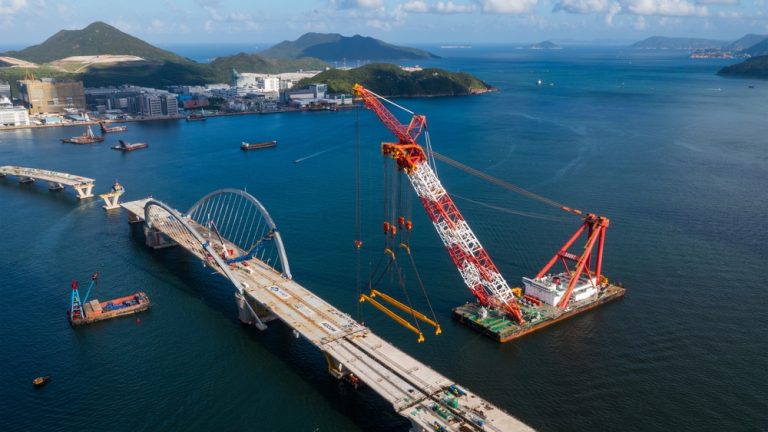
The Evolution of Tseung Kwan O: From Fishing Village to Modern Satellite Town
Once a quiet bay flanked by sleepy fishing hamlets, Tseung Kwan O has transformed into one of Hong Kong’s most ambitious urban developments. Nestled between Sai Kung and the Kowloon Peninsula, it now stands as a model of planned urban growth, balancing residential expansion, transport integration, and public space design. Check out this article to learn about the area’s deep history.
Before the New Town: Life in Junk Bay
Before development began in the 1980s, the area known today as Tseung Kwan O was better known by its older name, “Junk Bay”. The surrounding villages, such as Hang Hau, Po Lam, and Tseng Lan Shue, were modest communities that depended mainly on fishing, agriculture, and salt production.
With its sheltered coastline and calm waters, the bay supported generations of fisherfolk who lived in stilt houses and on boats. Several coastal villages dotted the shoreline, including:
- Hang Hau Village – One of the larger rural settlements, with roots dating back to the Qing Dynasty.
- Tiu Keng Leng (Rennie’s Mill) – A settlement established by Kuomintang loyalists after the Chinese Civil War, known for its unique history and cultural mix.
- Fat Tong Chau – A small island (now connected to land) once inhabited by fishermen and quarry workers.
These communities had their schools, temples, and economies. They were largely self-sustaining but cut off from the rapid urban development elsewhere in Hong Kong.
The Big Shift: Planning a New Town
Hong Kong’s population surged in the post-war decades, so the government looked beyond traditional urban centers to relieve housing pressure. Tseung Kwan O was identified in the 1980s as a prime candidate for a “New Town” development, a model already implemented in areas like Sha Tin and Tuen Mun. Key aspects of the Tseung Kwan O New Town plan included:
- Extensive Land Reclamation: Much of the flat land in present-day Tseung Kwan O—including the town center, Tseung Kwan O Industrial Estate, and LOHAS Park—was built on reclaimed seabed.
- Zoned Urban Layout: The town was divided into residential, commercial, industrial, and recreational zones from the outset.
- Mass Transit Connectivity: The MTR Tseung Kwan O Line extension in the early 2000s linked the area with Kowloon and Hong Kong Island, making it viable for commuters.
The first phase of the New Town opened in the late 1980s, with Po Lam Estate and Metro City Plaza among the earliest developments. Since then, waves of expansion have brought new residential towers, shopping complexes, and community facilities.
Tiu Keng Leng: A Unique Legacy
One of the most distinctive stories within Tseung Kwan O’s transformation is the evolution of Tiu Keng Leng, initially founded by refugees from mainland China in the 1950s. The settlement was an enclave of Nationalist supporters who resisted the Communist regime, leading to a somewhat isolated, self-governed village.
By the 1990s, the original wooden houses and steep terrain had become unsustainable, and the government cleared the site to make way for new residential towers and educational institutions. Today, Tiu Keng Leng is home to modern estates, an MTR station, and the Hong Kong Design Institute—but its political and cultural roots remain part of the area’s identity.
Tseung Kwan O Today: A City Within a City
In just a few decades, Tseung Kwan O has grown into a self-contained urban district with over 400,000 residents. It’s no longer just a “new town” in development—it’s a matured extension of Hong Kong’s metropolitan area. What sets Tseung Kwan O apart today is:
- Transport Infrastructure: MTR stations (Po Lam, Hang Hau, Tseung Kwan O, LOHAS Park, Tiu Keng Leng), cross-bay links, and an expanding bus network.
- Recreational Spaces: The waterfront promenade, cycle tracks, sports grounds, and nearby hiking trails toward Sai Kung and Clearwater Bay.
- Community Facilities: A regional hospital, public libraries, cultural centers, and many international schools and residential clubs.
- Green Building Initiatives: Many newer developments, especially in LOHAS Park, incorporate eco-friendly design principles and smart energy systems.
Looking Ahead: What’s Next for Tseung Kwan O?
Even with its dramatic growth, Tseung Kwan O is far from finished. Major projects underway or planned include the Cross Bay Link (a combined vehicular and pedestrian bridge), a new cultural and sports complex, and further residential development in reclaimed areas.
At the same time, there’s a growing public interest in preserving traces of the district’s past—whether through protecting village temples, restoring heritage buildings, or simply telling the stories of those who lived here long before the skyscrapers arrived.
Conclusion
Tseung Kwan O is more than just a place to live—it’s a living example of how Hong Kong continuously reinvents itself while navigating questions of identity, space, and memory. As the district continues to grow, so too does its story, from its humble beginnings on the water to its bold place on the city’s skyline.

